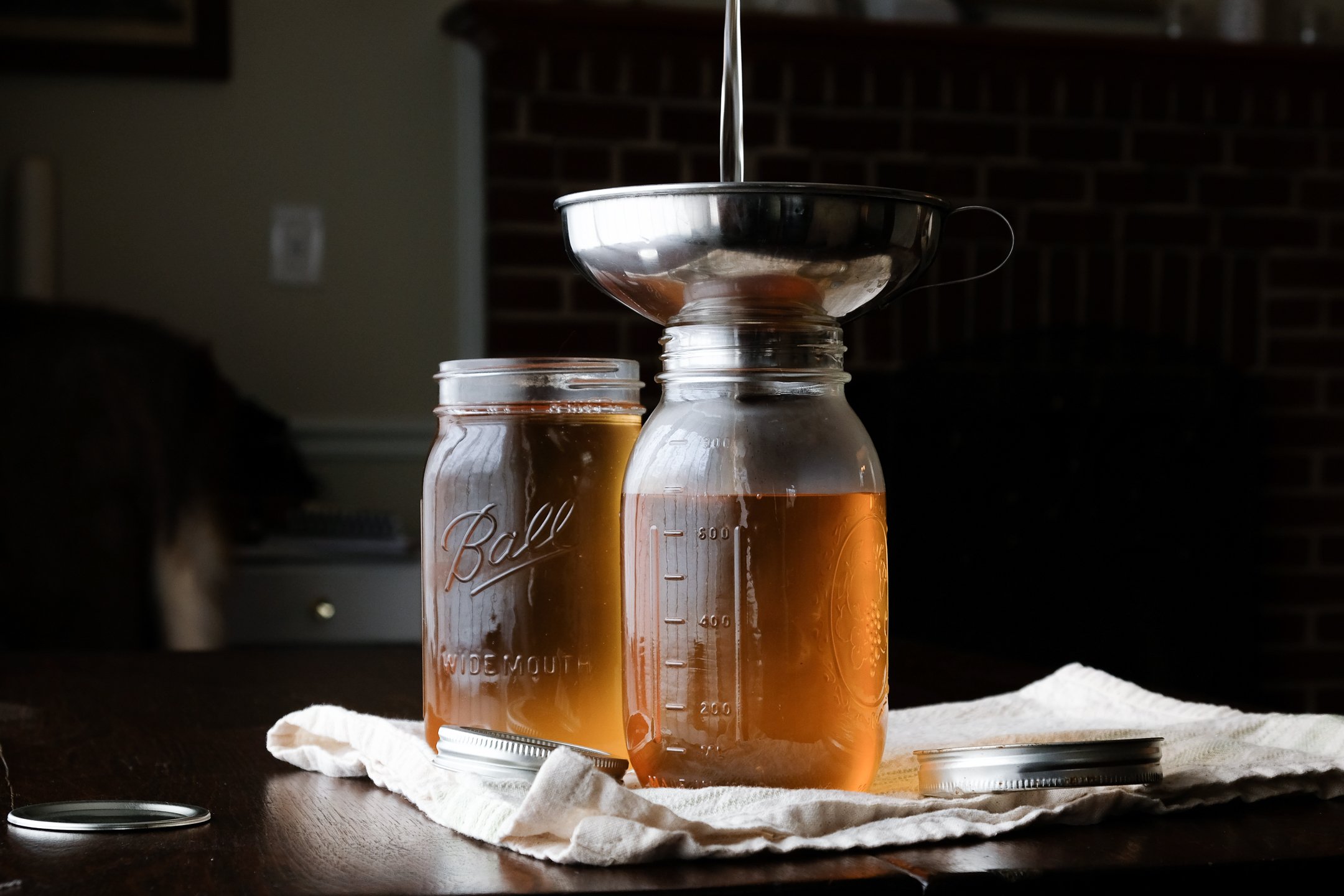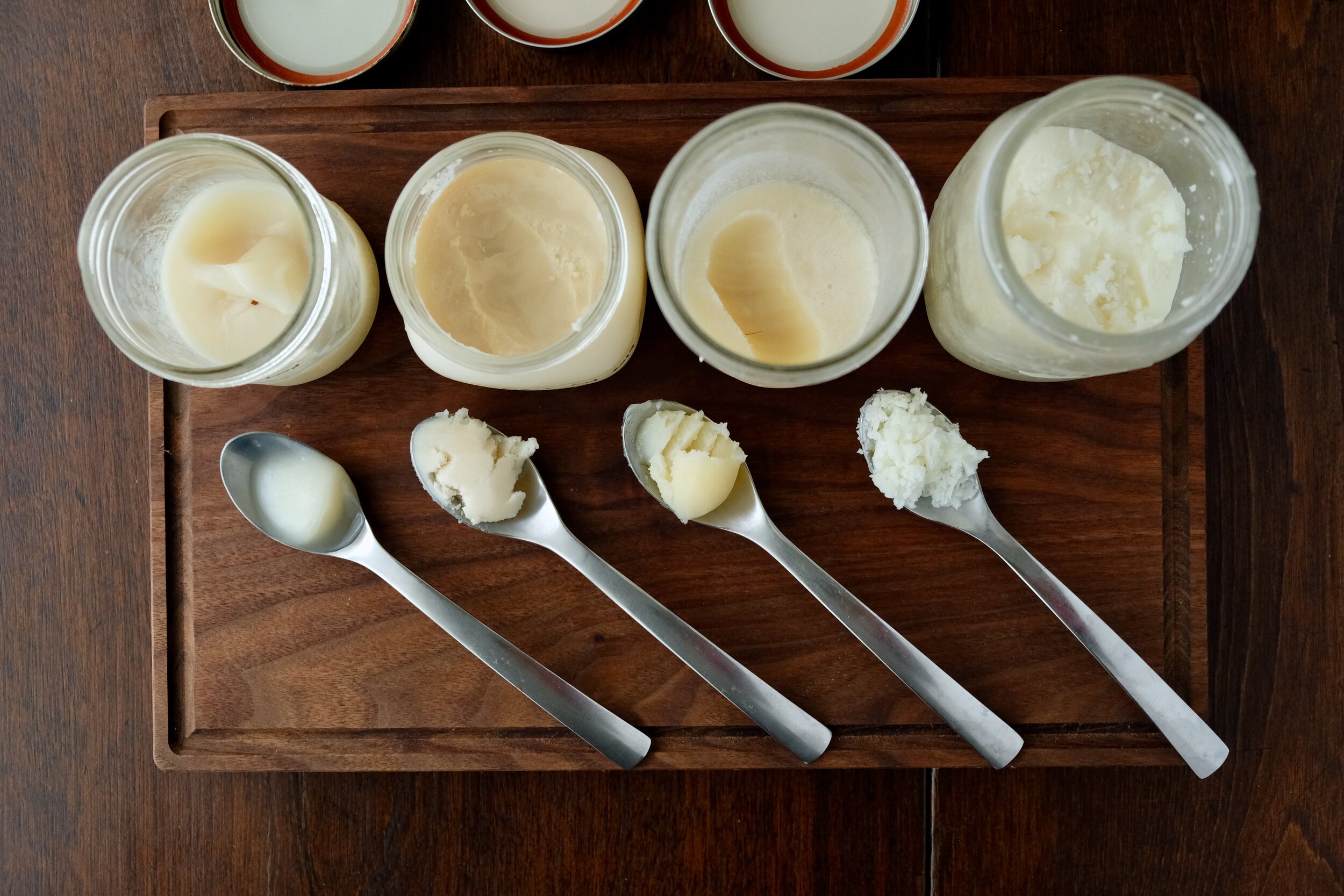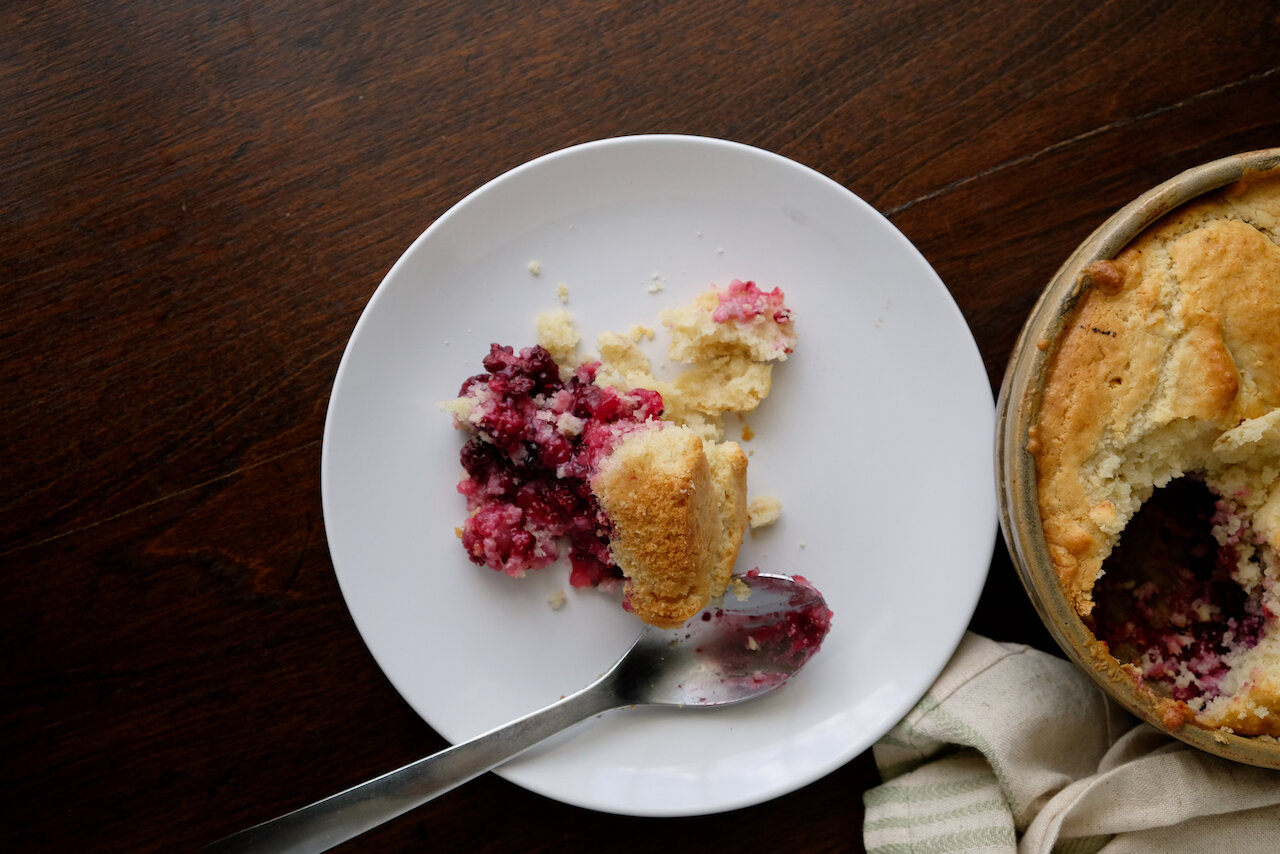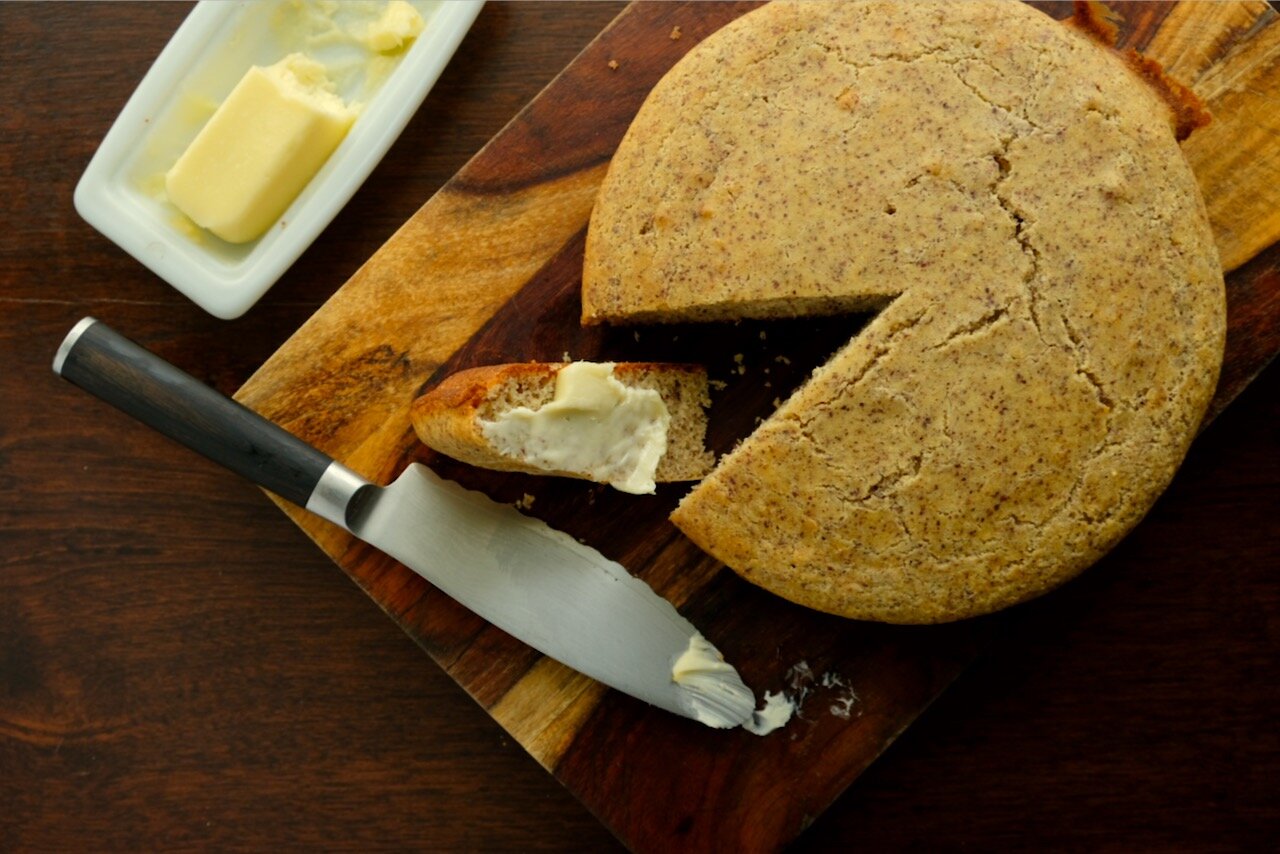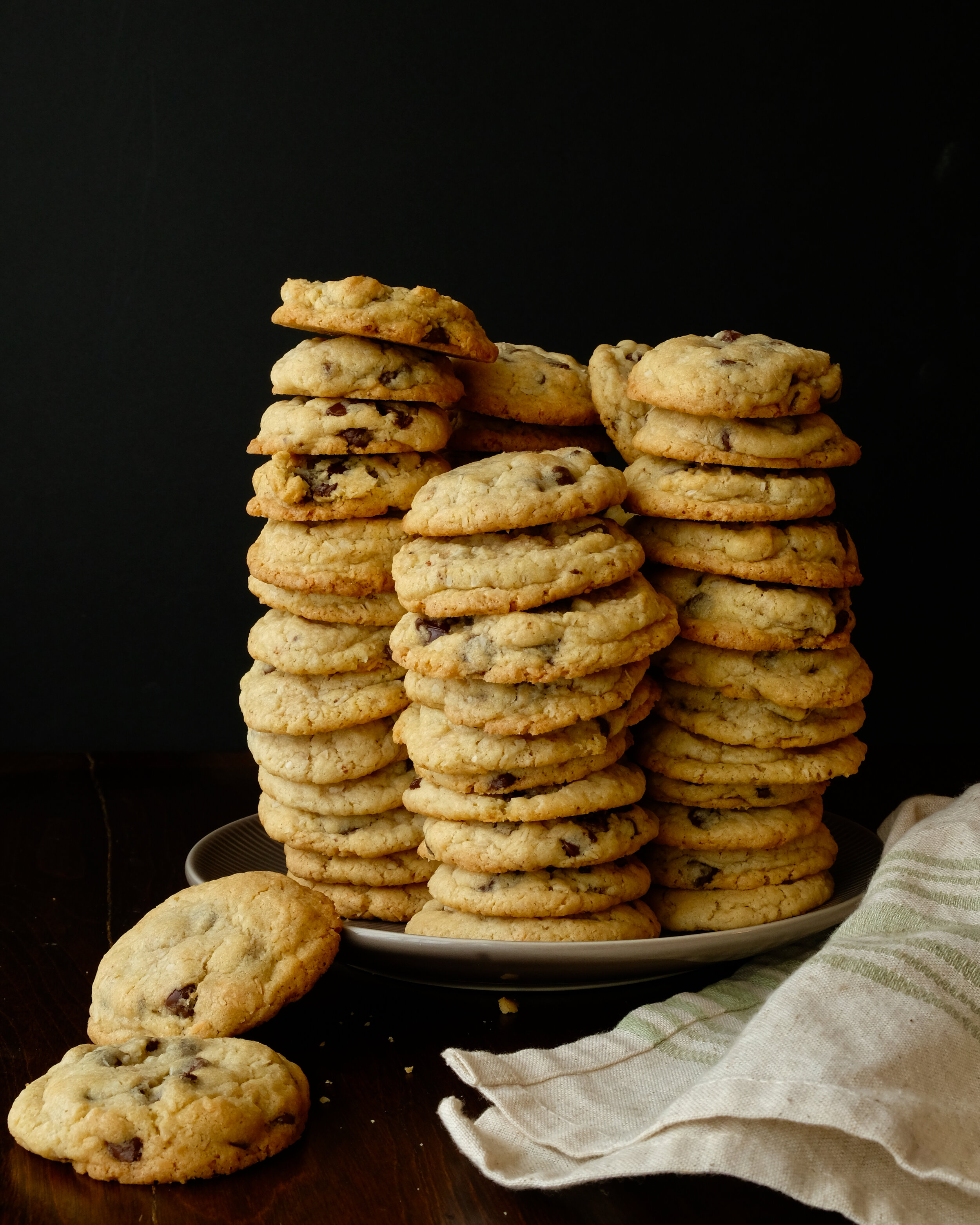Blueberry Tart with Deer Tallow Crust
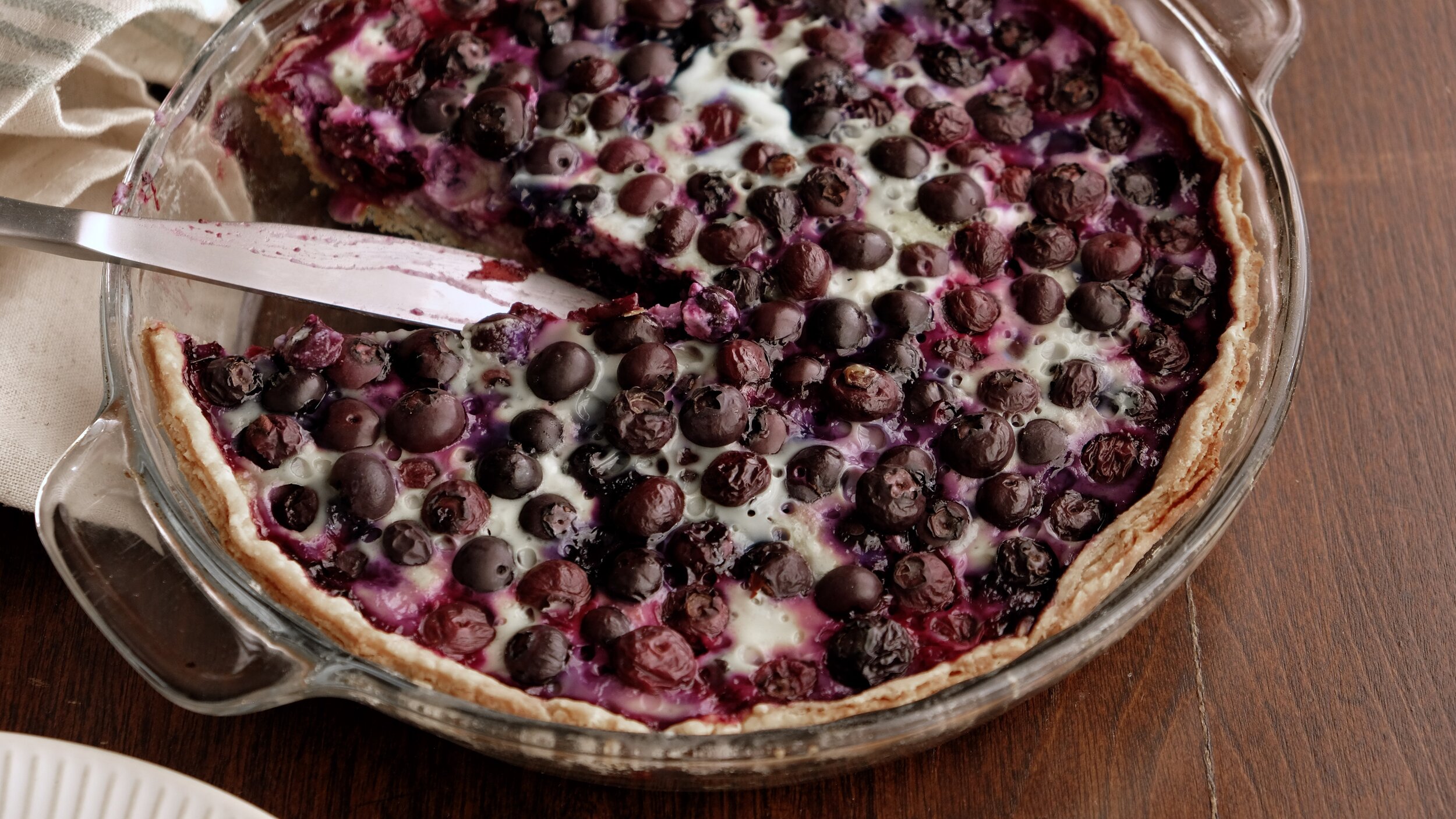
Up until fairly recently, Wade and I didn’t do a whole lot of baking. It’s an art form and a science, and doing it well- like, really really well- involves a lot of trial and error because you can’t exactly taste as you go and tweak things as needed. Our cooking style tends to be a little looser and more free form- we really only measure ingredients when we’re finalizing a recipe for the website or making charcuterie, and one of my roles in the kitchen is “spice witch”- appearing at Wade’s side when the dish is almost done and adding a little bit of this, a little bit of that, until it’s perfect. This approach doesn’t lend itself well to baking, because baking involves commitment and confidence- once that pie goes in the oven, you’re committed to it however it comes out, and you have to be confident that it’s going to turn out great. Beyond all that, too, is my complete aversion to dealing with finicky pastry recipes and rolling out dough.
But for many reasons, this year we’ve found ourselves baking a ton. There’s all the usual pandemic-related excuses, but I think we’ve both secretly developed a sweet tooth. And we have all this beautiful deer tallow and beaver lard taking up space in the back of the fridge, beckoning us to experiment with it.
A few months ago, we played around with using beaver lard in a pie crust. Although it's softer than pork lard, we thought it might be a good substitute for pork lard or shortening in a pie crust recipe. For whatever reason, that crust didn’t turn out so great. Maybe it was the beaver lard, maybe it just wasn’t a great recipe, maybe we just messed it up. That crust, instead of being light and flaky, was dense and crumbled like a graham cracker crust. Not what we were looking for.
After that failure, we waited a while to revisit the pie dough- confidence is, after all, key to baking- but the other day, when we scored a bunch of fresh blueberries, I got pie on my mind. This time, though, I used both butter and deer tallow for the dough, and it turned out spectacularly. I’m not kidding or exaggerating when I say this is hands-down the best pie crust I’ve ever made. The dough itself was easy to work, rolled like a charm without sticking or getting warm too quickly, and baked up into the lightest, flakiest crust I’ve had, either at home or in a restaurant.
From a food chemistry perspective, I couldn’t tell you exactly why the deer tallow played so well in this crust, but I have my theories. I was skeptical that it would work- you never hear about using beef tallow in baking, which is what deer tallow is most similar to. But I think some of the “unappealing” qualities of tallow are what helped with the flakiness of the crust.
First, many pie recipes involve grating or otherwise shredding butter or chilled lard into small pieces before quickly working it into the flour, taking care to keep it from melting or softening. The deer tallow, straight out of the fridge, is hard as a rock, and holds its shape longer as it warms to room temperature. In order to measure out the tallow for the recipe, I had to shave it thinly with a knife, and it crumbled into small, thin shards that worked quickly into the flour without melting. When the pie is baked, this unmelted fat is what creates those flakes in the crust. I did also use butter in the dough, which smeared a little more as I was working it and seems to add a little more elasticity, moisture, and softness to the dough. I probably would not attempt this with 100% deer tallow, as I think the water content and lower melting point of the butter helped to hydrate the dough, while the tallow provided structure. I am also reasonably certain that this is why our beaver lard pie crust failed- we had attempted a 100% beaver lard recipe.
Secondly, tallow has a much higher smoke point than butter. Butter will start to burn at around 370 degrees fahrenheit, which is lower than the temperature I baked this pie at. Tallow has a smoke point of around 400-450 degrees, which means that although this crust did brown in the oven due to the butter, it did not come anywhere close to burning, and I didn’t have to worry about shielding the pie with aluminum foil to keep the crust from burning while the filling set. Baking a pie is usually a pretty finicky process from beginning to end, and I really appreciated not having to constantly monitor the color of the crust.
When we first started rendering and saving all our deer fat, around this time last year, I remember looking at the 2+ gallons in the fridge and thinking we’d never get through it, that there couldn’t possibly be any culinary application for it. Our other recipes with deer tallow have been delicious, but I’d have to say that this is the first recipe we’ve made where the tallow has not only been a good substitute, but actually outperformed vegetable or domestic animal fats.
One note on this recipe- as with many of our other recipes, we strongly recommend using a kitchen scale to weigh out ingredients for this one. It’s less messy and you get consistent results every time. Tare your scale before you add each ingredient to the bowl- this way, you only dirty one bowl, instead of countless measuring utensils. This recipe makes enough dough for two crusts, and you only need one to bake the blueberry tart. You can save the other in the fridge, unbaked, for a few days.
Blueberry Tart with Deer Tallow Crust
Prep time: 30 minutes
Cook time: 1 hour
Ingredients:
Crust
315g (about 2.5 cups) all-purpose flour
6g salt
90g (about 6 tablespoons) unsalted butter, chilled and cubed
150g (about 3/4 cup) rendered deer tallow, chilled
ice water
dried thyme (optional)
Filling
595g blueberries
148g half and half or heavy cream
78g powdered sugar
2 eggs, beaten
4g vanilla
Zest of one lemon
Method:
In a bowl, combine all-purpose flour and salt. Stir. Add cold, cubed butter and shaved deer tallow. If your fats got a little warm while measuring them out, throw the whole bowl into the fridge or freezer to allow them to chill before working them into the flour. Using your fingers, a fork, or a pastry cutter (I used my hands), crumble and mix the fats into the flour, until the dough looks relatively well incorporated and “pebble-y.” Don’t worry about having some pieces of unincorporated fat- these will be what create those flaky layers in the dough.
The dough will still look dry at this point, so add a little ice water, a tablespoon at a time, to the dough, gently working it in with your hands, until it holds together and you can shape it into a ball.
Cut the dough in half and form into two balls. Flatten them and tightly wrap with cling wrap and place in the fridge for around an hour to firm up. They will keep for days in the fridge, unbaked.
When you’re ready to bake, lightly flour your work surface. Sprinkle a little dried thyme (or any other herb you prefer) onto the flour and roll dough out into an approximately 12 inch circle. If the dough is too dry and cracking, moisten your fingertips with water and drip some along the dry areas as you work. Place the rolled dough in a greased pie dish, prick the bottom and sides with a fork, and trim overhanging edges.
Cut a piece of parchment paper and lay over top of the crust. Fill the crust with pie weights or dried beans, all the way up to the top, and parbake at 375 for 15-20 minutes. Remove the weights and parchment and place crust back in the oven for another 5-10 minutes, or until the crust is baked through all the way to the center of the pie.
While the crust is in the oven, prepare the custard filling. Beat the eggs, and add the heavy cream, sugar, vanilla and lemon zest.
Once the crust is parbaked, pour in the blueberries and then top with the custard mixture. Bake for 20-30 minutes, or until the custard is set.




